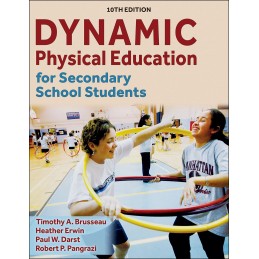Dynamic Physical Education for Secondary School Students (DPE) continues its legacy as the go-to textbook for preparing future secondary physical educators. Now in its 10th edition, this trusted resource presents a standards-based approach to teaching physical education.
DPE guides physical education teacher education (PETE) students through the process of creating a positive learning environment that is developmentally and culturally appropriate for all students and is designed to develop skills that promote physical activity outside of school and across the life span.
DPE is an ideal resource for preparing preservice physical educators to feel confident and effective in the class setting from day one. It provides the foundational knowledge to teach quality physical education and complements that learning with a host of ready-to-use activities and lesson plans. PETE students can use each lesson plan as is or build their own lesson plans from the provided activities.
The principles of
DPE have been implemented and studied for more than five decades and have stood the test of time. The text emphasizes skill development, activity promotion, and physical fitness behaviors that serve as the foundation of quality physical education programming and teaching. The enhancements in this 10th edition continue to build on those pillars to put theory into practice::
- Updates throughout the text stress the importance of culturally relevant pedagogy and curricula and emphasize social-emotional learning.
- QR codes link directly to complete units and lessons on the Dynamic PE ASAP website so readers can immediately see application of specific activities.
- Activity chapters have been reorganized around game themes to better align with current curriculum approaches, and new activities and games (such as pickleball) have been added.
This text will help current and future educators promote physical activity beyond the school day. It offers a vast array of evidence-based activities and instructional strategies that will help PETE students shape quality physical education programs, employ successful teaching practices for secondary students, administer a comprehensive school physical activity program (CSPAP), and offer activities that motivate students and improve their skill and competence. Teaching tips also provide insights drawn from the real-life experiences of teachers and teacher educators.
DPE continues to meet the needs of preservice and in-service teachers in developing curricula that meet physical education standards.
DPE continues to be one of the most widely used and influential secondary physical education texts in the field. It helps readers implement current best practices and equips students with the information they need to create engaging and meaningful PE programs.


 Dostawa
Dostawa
 Płatność
Płatność
 Zwroty
Zwroty
